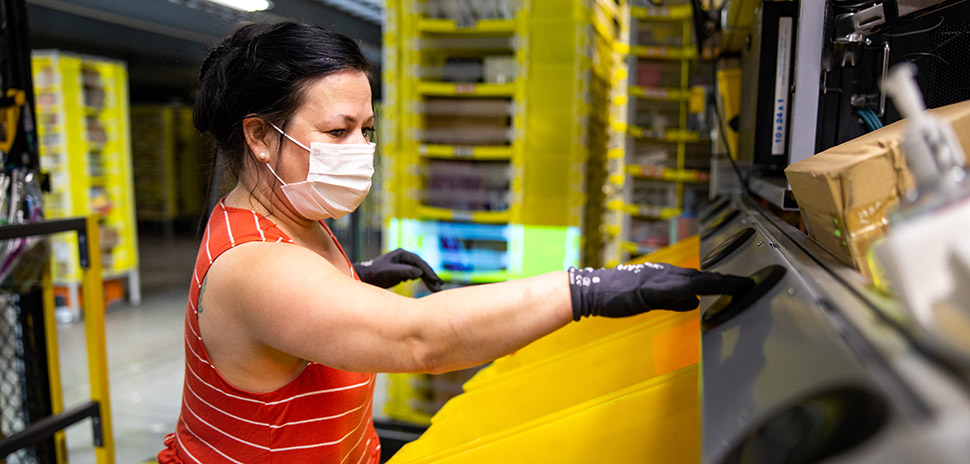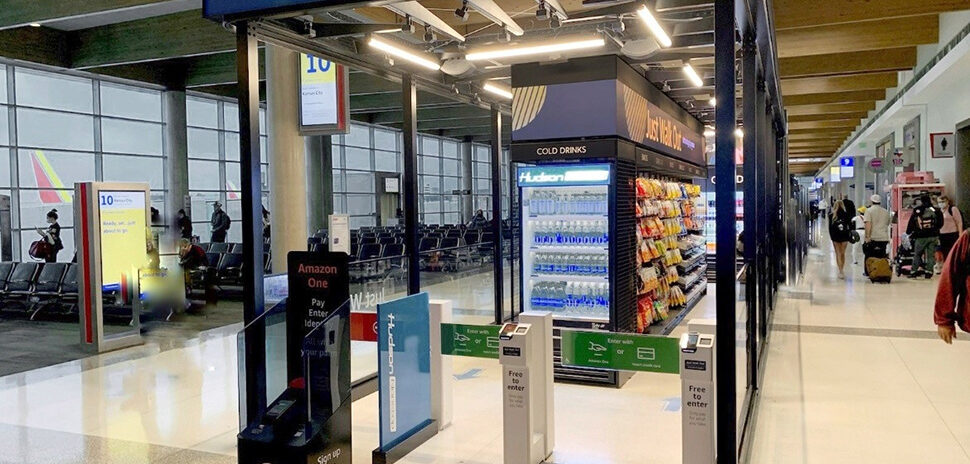How does the logistics arm of the world’s biggest retailer handle a once-in-a-century pandemic? The answer: employing tech, pragmatic problem-solving, and communications, Eli Pabon, Regional Director of Logistics at Amazon, said in a virtual Responsible Return to Work discussion hosted by the Dallas Regional Chamber.
Here are four takeaways from Pabon’s discussion:
1. Training Computers to Identify Social Distancing Boundaries
“All the facilities we’re talking about have camera (monitoring) systems,” said Pabon. “What we were able to do instead, was use some analytics, use machine learning, to… teach computer systems to understand if people actually were breaking physically six-foot social distancing.”
Pabon said it took some work to train the computers to understand the concept of perspective (where individuals were in alignment, but more than six feet apart), but over time, technology got it.
“Over time, it’s become our daily cadence, where we actually monitor and report out on how we’re using AI to actually evaluate if people are social distancing. [It] helps us pinpoint where we have congestion, and ways that kind of decongest those areas.”
2. Using Thermal Cams to Check Employee Temperatures
Recognizing that employees were putting themselves at risk by taking one another’s temperatures, Amazon Logistics applied a different tech solution: thermal cameras.
“Temperature checks with a handheld… thermometer still allow for relatively close interaction, regardless of the use of face shields and screens,” Pabon said. “The use of thermal cameras allows us to actually have people simply walk into the facility. Someone is stationed at a laptop and can, from 10 feet away, look at that person and give them a ‘thumbs up,’ to say you’re good to go, without ever interacting with them, or breaking social distancing rules.”
3. Keeping Communications Short, Relevant and Centralized
Pabon said Amazon Logistics is very judicious about how often it communicates with employees, engaging them for steady feedback, and providing easy access to company information.
“It’s kind of evolved over time, and it’s actually now a live, almost social style update,” he said. “Where we have a website that is central to all the communications that we have. Smaller businesses can adopt the same principle, and centralize where information is coming from.”
Amazon Logistics also has a daily questionnaire it sends out to its drivers and associates.
“It asks, ‘Were you able to get a mask today?’, ‘How are you feeling today?’, and ‘Were you able to access all supplies you need?’” Pabon said. “They’re just simple questions that allow us to take real-time feedback from our associates.”
He said the result is good feedback that helps Amazon Logistics improve quickly.
4. Communicating—Especially if an Associate Tests Positive; Contact Trace and Employee Leave for Recovery
“We focus a lot on communication for employees when it comes to a suspected case (or a) confirmed case,” Pabon said. “What to do, who to notify if we have a confirmed case. In our case, we are on the side of being overly cautious. We make sure that … 100% of the associates and everyone at work in the facility are notified.”
He said that Amazon Logistics also developed methods of contact tracing for the virus, and to have strong policies in place that allow employees who have contracted the virus to have two weeks’ paid leave to allow them to recover in self-quarantine.
A version of this story first appeared on the Dallas Regional Chamber site. Dallas Innovates is a collaboration of D Magazine Partners and the Dallas Regional Chamber.
![]()
Get on the list.
Dallas Innovates, every day.
Sign up to keep your eye on what’s new and next in Dallas-Fort Worth, every day.

































